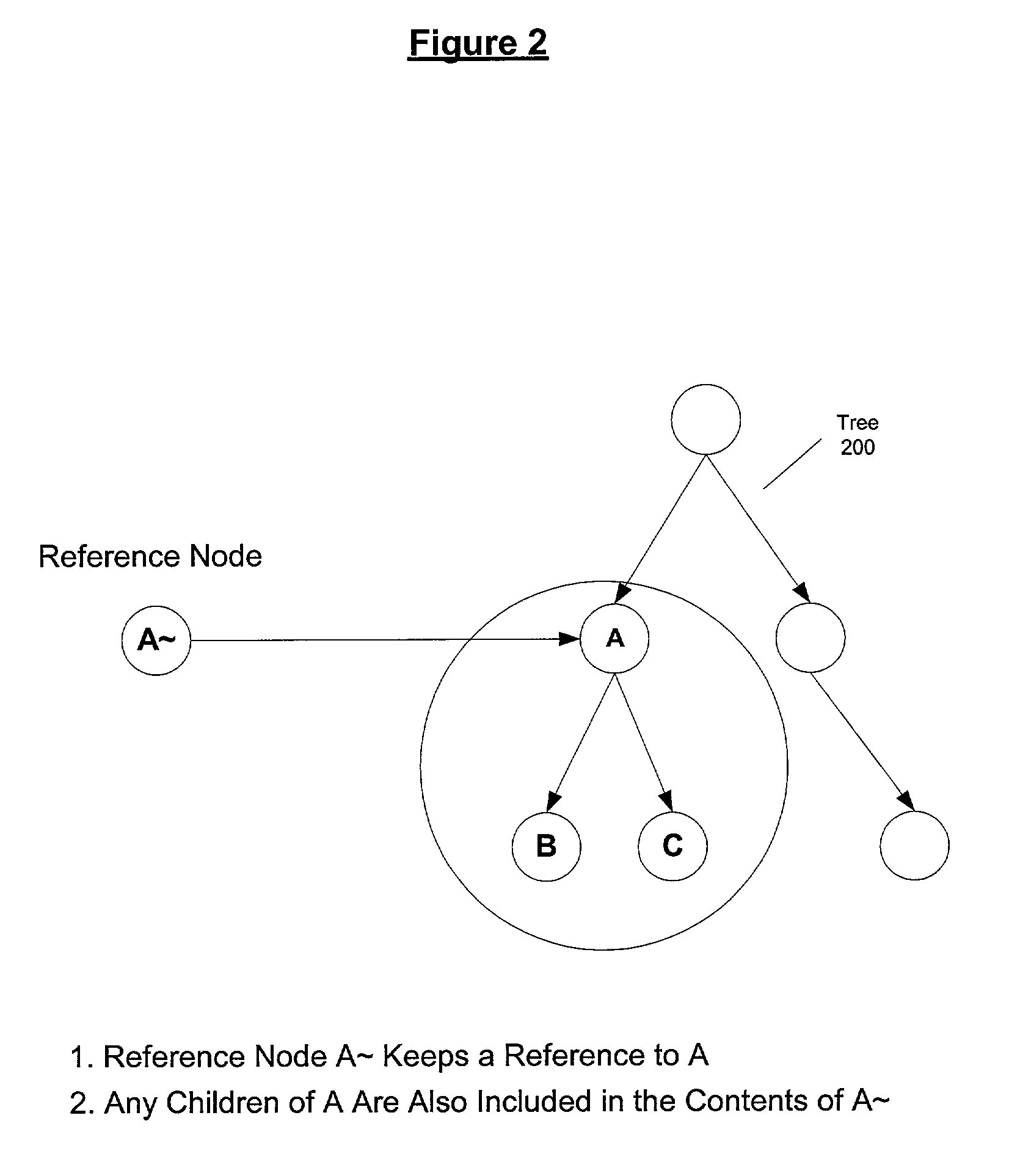Method and apparatus for runtime merging of hierarchical trees
a hierarchical tree and runtime technology, applied in the field of runtime merging of hierarchical trees, can solve the problems of high cost of tree traversal, high cost of memory allocation, and inability to runtime merging,
- Summary
- Abstract
- Description
- Claims
- Application Information
AI Technical Summary
Benefits of technology
Problems solved by technology
Method used
Image
Examples
case study
[0051]Embodiments of the present invention include an enterprise where desktop applications are accessed via a computer network. For simplicity, the users in the organization may have their data divided into three layers; namely a user layer, a group layer, and an administrative layer (admin). The group layer defines the set of data that is common to all users in the same group (for example, an engineering group or a human resources group). Administrators keep data that are common to the organization or all the groups in the organization. If the user of a group would like to fetch the preference data that pertains to any office application, the information is distributed in three layers, each represented as a DOM tree in memory.
[0052]Nodes (carrying preference data) in the user layer have precedence over the group layer and the group layer has precedence over the administrative layer. So, if the same node is present in the user and group layer, the winning node is picked from the us...
PUM
 Login to View More
Login to View More Abstract
Description
Claims
Application Information
 Login to View More
Login to View More - R&D
- Intellectual Property
- Life Sciences
- Materials
- Tech Scout
- Unparalleled Data Quality
- Higher Quality Content
- 60% Fewer Hallucinations
Browse by: Latest US Patents, China's latest patents, Technical Efficacy Thesaurus, Application Domain, Technology Topic, Popular Technical Reports.
© 2025 PatSnap. All rights reserved.Legal|Privacy policy|Modern Slavery Act Transparency Statement|Sitemap|About US| Contact US: help@patsnap.com



